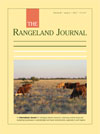RJ14050Potential environmental effects of pack stock on meadow ecosystems of the Sierra Nevada, USA
The use of pack stock animals in support of recreational and administrative activities in Sierra Nevada (USA) meadows is an issue for land management agencies and special interest groups due to concerns regarding potential environmental effects. We evaluated the literature on pack stock effects in meadow ecosystems and determined that pack stock animals through grazing and trampling have the potential to affect: plant cover and composition, soil compaction and stream bank integrity. Sierra Nevada meadow ecosystems are biodiversity hot spots and provide essential ecosystem services so a detailed evaluation of potential stressors is needed for effective stewardship planning.




